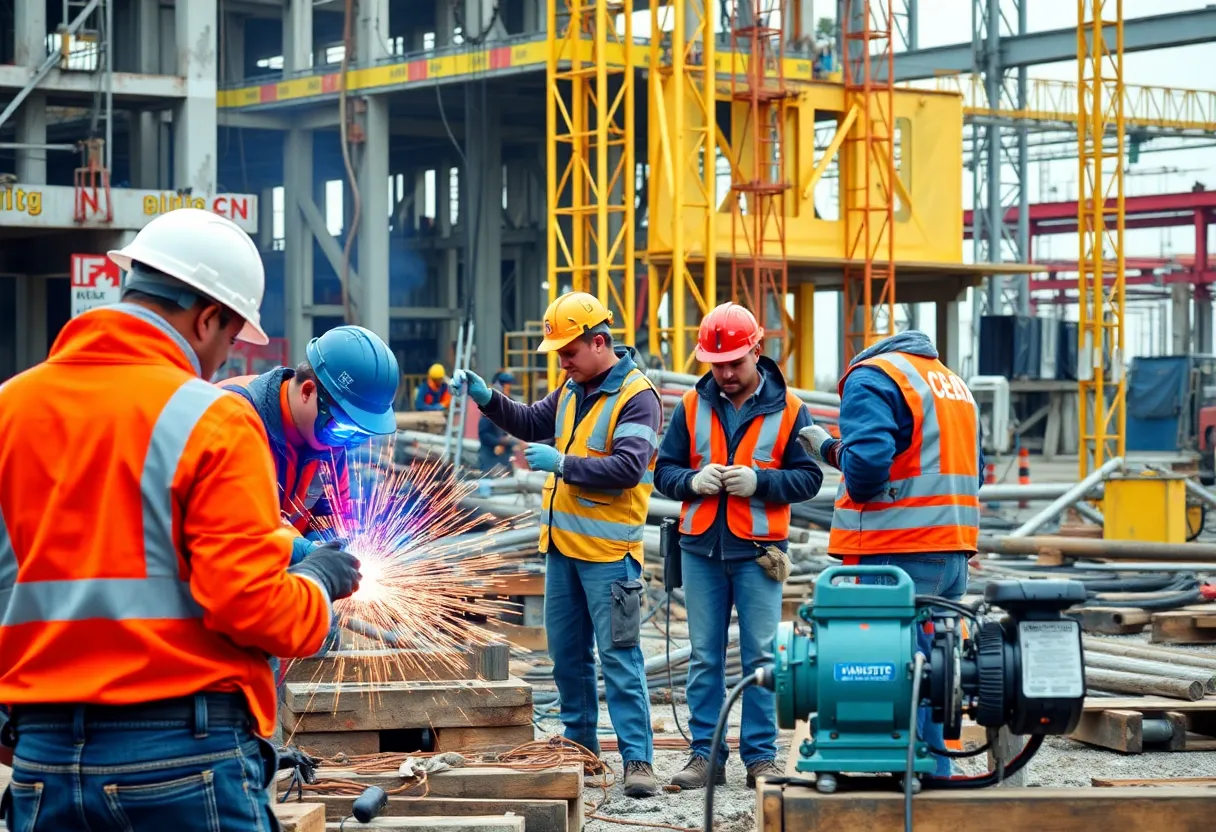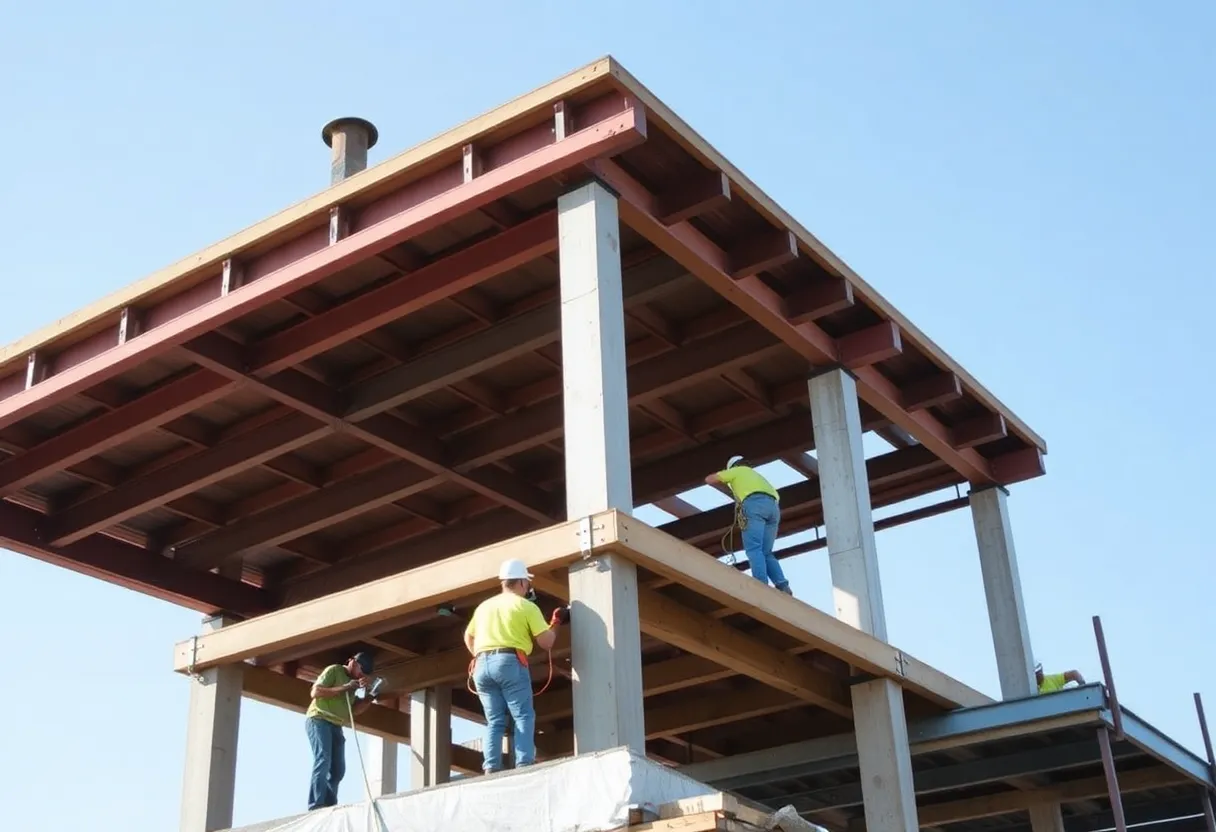News Summary
The U.S. labor market shows resilience despite a slight increase in jobless claims, presenting new opportunities for the construction sector. With about 382,000 job openings each month, the industry faces talent shortages while embracing technology to mitigate rising labor costs. Stable financing from the Federal Reserve and substantial government investments in infrastructure support the sector’s growth. Key firms report backlogs and optimism for future projects, although challenges like material costs and labor shortages remain. Focused investments in technology and workforce development are crucial for navigating the evolving landscape.
U.S. Labor Market Resilience Offers Construction Sector New Opportunities
The latest figures from the U.S. Initial Jobless Claims report show an increase of 218,000 new applications for the week ending July 26, 2025. This increase, while it marks the first uptick in seven weeks, is considerably lower than the anticipated forecast of 224,000 claims. Despite the slight rise in jobless claims, these numbers reflect a resilient labor market that continues to support the needs of various sectors including construction.
Construction Sector Seizes Labor Market Dynamics
In light of the current tightening labor environment, the construction industry is actively tackling its ongoing challenge of talent shortages. Since August 2023, the sector has been experiencing approximately 382,000 job openings each month, underscoring the high demand for skilled workers in essential trades such as welding, electrical work, and project management. The situation is further highlighted by a job openings-to-unemployed persons ratio of 1.06 as of June 2025, revealing an urgent need for skilled labor.
Technology Helps Offset Rising Labor Costs
Although labor costs are on the rise, construction firms are adopting innovative solutions to alleviate some of the financial pressures. The integration of AI-driven automation and digital tools like Building Information Modeling (BIM) is helping businesses to streamline their operations and reduce reliance on manual labor. This shift toward technology is becoming increasingly vital as the sector aims to enhance productivity and efficiency.
Stable Financing Paves Way for Growth
The Federal Reserve has kept interest rates steady at 4.25%-4.50%, fostering a stable financing environment for construction projects. Additionally, government initiatives such as the Infrastructure Investment and Jobs Act (IIJA) and the Inflation Reduction Act (IRA) have injected over $1.9 trillion into clean energy and infrastructure initiatives. These substantial investments are crucial for long-term growth in the construction sector.
Positive Indicators from Key Construction Firms
Prominent construction companies are reporting significant backlogs and future growth potential. For instance, MasTec, Inc. has experienced a 23.7% year-over-year increase in its backlog, driven primarily by its expansion in clean energy and telecom projects. Dycom Industries, which specializes in fiber-optic networks, stands to benefit greatly from government-funded initiatives promoting broadband access. Similarly, Primoris Services Corporation has an impressive $11.4 billion backlog and is concentrating on utility-scale solar projects, aligning with national decarbonization strategies.
Government Projects Bolster Economic Stability
The construction industry’s dependency on government-funded projects serves as a protective buffer against broader economic challenges. Notably, Orion Group is focusing its efforts on securing funding for port and infrastructure upgrades, all while maintaining a strong emphasis on debt reduction strategies. As the market anticipates potential interest rate cuts later in 2025 and into 2026, access to capital for construction continues to improve.
Challenges and Future Prospects
Despite the positive indicators, the construction sector is not free from challenges. Elevated material costs and significant labor shortages, particularly in immigrant-heavy trades, remain pressing issues. The Employment Cost Index (ECI) recently recorded a 3.6% year-over-year increase in wages, which could further compress margins across various sectors.
Moving forward, analysts suggest a focus on construction firms that demonstrate strong digital capabilities and workforce development initiatives. These investments in technology and training are expected to position companies favorably for future opportunities. In contrast, the consumer discretionary sector is grappling with rising labor costs and changing consumer behaviors, leading to layoffs and decreased investor confidence.
Adopting a Strategic Investment Approach
Ultimately, the construction sector’s performance continues to stand out amidst broader economic fluctuations. By prioritizing targeted investments in firms that integrate technology and enhance their workforce capabilities, stakeholders can navigate the turbulent market landscape. The promising signs of resilience in the labor market may herald new opportunities for growth and development in construction.
Deeper Dive: News & Info About This Topic
Additional Resources
- AI News: Hidden Goldmine in Construction Engineering Stocks
- Reuters: U.S. Weekly Jobless Claims Fall
- AI News: Jobless Claims Signal Labor Market Resilience
- Wikipedia: Construction Industry
- Encyclopedia Britannica: Employment
Author: Construction FL News
The FLORIDA STAFF WRITER represents the experienced team at constructionflnews.com, your go-to source for actionable local news and information in Florida and beyond. Specializing in "news you can use," we cover essential topics like product reviews for personal and business needs, local business directories, politics, real estate trends, neighborhood insights, and state news affecting the area—with deep expertise drawn from years of dedicated reporting and strong community input, including local press releases and business updates. We deliver top reporting on high-value events such as the Florida Build Expo, major infrastructure projects, and advancements in construction technology showcases. Our coverage extends to key organizations like the Associated Builders and Contractors of Florida and the Florida Home Builders Association, plus leading businesses in construction and legal services that power the local economy such as CMiC Global and Shutts & Bowen LLP. As part of the broader network, including constructioncanews.com, constructionnynews.com, and constructiontxnews.com, we provide comprehensive, credible insights into the dynamic construction landscape across multiple states.





